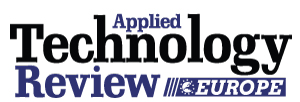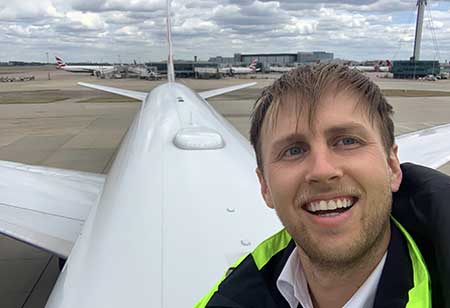THANK YOU FOR SUBSCRIBING

Predicting Wildfire Danger with Machine Learning and Remote Sensing
Beatriz Reis, Climate Data Scientist and Juhi Nagori, Climate Specialist, Haskoning

 Beatriz Reis, Climate Data Scientist and Juhi Nagori, Climate Specialist, Haskoning
Beatriz Reis, Climate Data Scientist and Juhi Nagori, Climate Specialist, HaskoningExtreme weather events are becoming more frequent and intense due to climate change, leading to significant loss of life and infrastructure. One hazard receiving growing attention is wildfire. Between 2001 and 2018, wildfires burned an average of 460 million hectares annually , which is three times the size of France. In 2023, wildfires became the leading cause of deforestation globally , and as of June 2025, over 100 million hectares had already been lost to fire . The increasing frequency and severity of wildfires leads to higher greenhouse gas emissions, which can trigger positive climate feedback loops.
Understanding Wildfires
Wildfires are uncontrolled fires that burn natural areas such as forests, grasslands or prairies. The Fire Weather Index (FWI) is a globally recognised meteorological index used to estimate fire danger based on fuel moisture and wind conditions. A higher FWI indicates more favourable conditions for wildfire ignition and spread.
While the FWI is powerful, it does have limitations. For example, it does not account for vegetation or topography, which are significant to wildfires. Additionally, FWI overlooks human activities, particularly arson, which is a major contributor to wildfire outbreaks and notoriously hard to predict. To overcome these gaps, scientists are combining FWI with non-meteorological variables using remote sensing and machine learning (ML).
The Role of Remote Sensing
Remote sensing uses satellite imagery to analyse radiation reflected or emitted by Earth’s surface and atmosphere. It helps provide valuable data for understanding environmental changes over time. Instruments like the MODIS sensor monitor fires, map burned areas and assess fire intensity .
ML For Fire Prediction
ML involves algorithms that learn patterns from data without the need for predefined relationships. Instead, they use historical predictor values and responses to learn the relationship by themselves. This means that algorithms can be developed faster using similar input data. Unlike traditional statistical methods, ML can automatically identify complex interactions between variables, making it ideal for wildfire prediction.
 Figure 1.Simplified scheme of traditional statistical programming versus machine learning, adapted from Microsoft Press .
Figure 1.Simplified scheme of traditional statistical programming versus machine learning, adapted from Microsoft Press .
ML algorithms have been shown to outperform traditional statistical approaches, offering greater accuracy and advanced fire danger modelling methodologies . Supervised learning approaches, especially ensemble algorithms like Random Forest and XGBoost, are widely used for fire danger modelling . These methods are fast, relatively easy to implement, and capable of producing accurate predictions using multiple input variables.
 Figure 2. Example of one decision tree used in ensemble learning algorithms based on 4 features – FWI, NDVI (a vegetation index), surface air temperature and elevation.
Figure 2. Example of one decision tree used in ensemble learning algorithms based on 4 features – FWI, NDVI (a vegetation index), surface air temperature and elevation.
Choosing the right ML algorithm can be challenging. Focus should be placed on improving data quality rather than fine-tuning models as high-quality data leads to better predictions. Therefore, most of a project’s time should be spent preparing and refining the dataset to enhance model performance.
 Figure 3. Adapted scheme of a machine learning data-centric process .
Figure 3. Adapted scheme of a machine learning data-centric process .
Combining ML and Remote Sensing
As it handles large datasets efficiently, ML has become essential for estimating fire danger. It is used to model fire ignition probability, assess wildfire susceptibility, and analyse environmental and social drivers of fire incidents. Integrating ML with remote sensing improves forest fire risk estimation, behaviour prediction and wildfire risk assessment .
“ML is transforming how we understand and manage environmental hazards. By decoding complex relationships quickly and accurately, ML enables faster, more effective risk mitigation”
Our Combined Wildfire ML model (which combines ML and remote sensing) uses over 10 variables to forecast fire danger with over 90% accuracy compared to observed burned areas. While ML models can sometimes learn from noise or make incorrect assumptions, they still outperform traditional methods that rely solely on meteorological data, such as the FWI alone.
Why Better Predictions Matter
Accurate wildfire danger predictions are vital as climate change and human activity continue to intensify these events. ML-derived insights support decision-making across numerous sectors including emergency response, environmental conservation, financial services, and policymaking.
Governments and communities can use wildfire risk data to improve resilience, protect lives and property, and guide sustainable development. Insurers and lenders benefit from better risk assessment, enabling more informed decisions in underwriting, pricing, and mitigation strategies.
Conclusion
ML is transforming how we understand and manage environmental hazards. By decoding complex relationships quickly and accurately, ML enables faster, more effective risk mitigation. In a rapidly changing climate, timely access to reliable wildfire danger data is essential for proactive decision-making and long-term resilience.
Beatriz Reis is a Climate Data Scientist at Haskoning, where she specialises in climate data analysis and risk mapping using advanced techniques. She has contributed to projects supporting climate resilience and holds an MSc in Energy & Environmental Sciences and a BSc in Applied Mathematics.
Juhi Nagori is a Climate Specialist at Haskoning, focusing on climate risk and meteorological hazards. She has a background in climate research and modelling with published research on atmospheric chemistry and develops digital tools using climate data. Juhi holds an MSc in Earth & Environmental Sciences.
Read Also























ON THE DECK